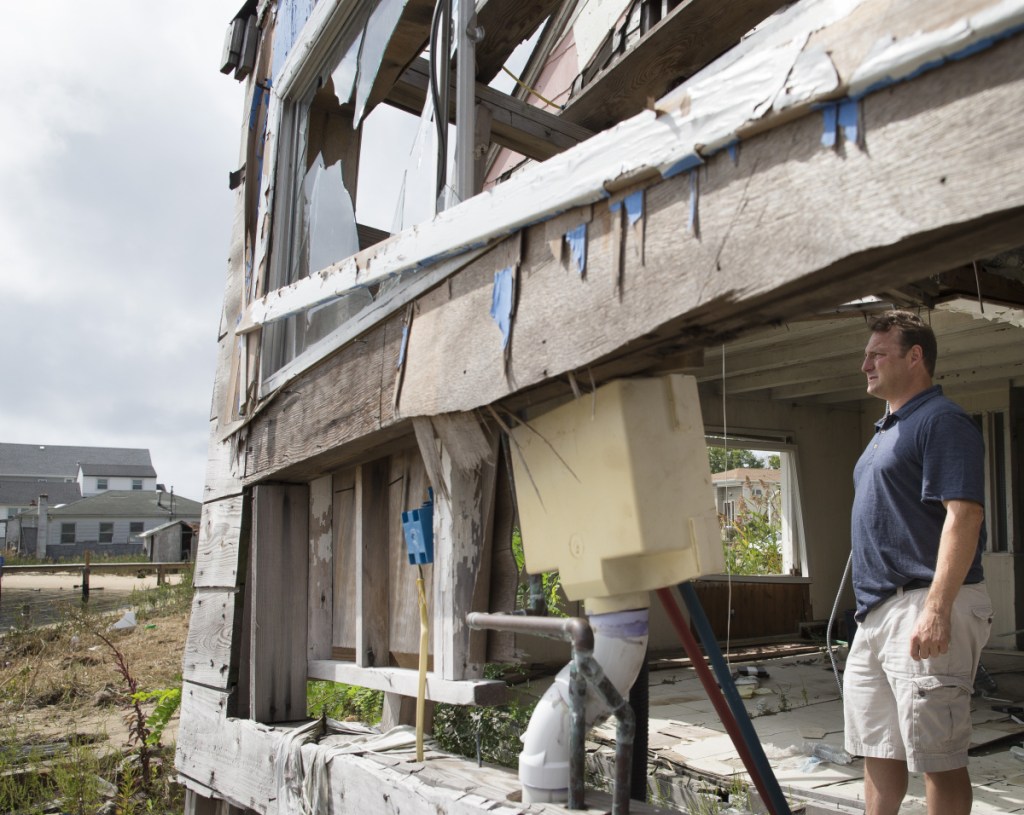There is consensus that something needs to change about the way forecasters categorize hurricanes. Category 2 storms are inflicting Category 5 damage.
If you’re only looking at that one number, you might not think you need to evacuate your coastal home, for example, like the 1,300 people who were rescued in New Bern, North Carolina, when Hurricane Florence made landfall in 2018.
“A lot of people did stay because the storm went down from a Category 4 to a Category 2, and they think of that number as being the end-all,” county public information officer Amber Parker said at the time.
Since Florence, and Hurricane Harvey before that, and even Hurricane Sandy before that, which technically wasn’t even a hurricane when it made landfall in New Jersey in 2012, the meteorological community has been considering whether the Saffir-Simpson scale, which only quantifies wind speed, is good enough to convey a storm’s threat.
On Thursday, the private weather company AccuWeather announced it was launching its own hurricane scale this year, 1 to 5, just like the Saffir-Simpson. Joel Myers, AccuWeather’s founder and chief executive, says the RealImpact Scale for Hurricanes, or RI, takes into account wind, flooding rain, storm surge and economic damage. He said he had seen the outcry for a better categorization system and that no one else stepped up.
“The current scale does not reflect the real impact of hurricanes,” Myers said. AccuWeather’s RI is a forecast that tells people what’s going to happen over land, Myers said. “It’s just a larger scale (than Saffir-Simpson) that is more comprehensive.”
Myers wouldn’t share how the algorithm works, but he did say AccuWeather tested it on storms dating to 2000 and that it performed well, in the company’s opinion. Hurricane Florence would have been an RI4 at landfall, versus a Category 1 on the Saffir-Simpson scale. Hurricane Harvey would have been an RI5, and so would Sandy.
Meanwhile, as AccuWeather was developing its algorithm, a small group of scientists and communicators were meeting almost weekly to discuss how to improve the Saffir-Simpson scale. Hurricane Florence tipped the scales for them, too.
“My family has property close to New Bern, so I was paying attention” to Hurricane Florence, said Ricky Rood, a professor of meteorology at the University of Michigan. After that storm, he reached out to a few other scientists to see if they were interested in collaborating to change the categorization system.
Ultimately, Rood said, “we decided it was premature.” Several members of the group interviewed people about their interpretation and use of the Saffir-Simpson scale and the warnings, and “they felt like we needed a whole lot more information on how emergency managers used the current information … before we started to propose new scales.”
“We also felt strongly that we needed to coordinate with the Hurricane Center to be effective,” Rood said.
James Franklin worked at the National Hurricane Center for nearly two decades before he retired in 2017. He knows the shortcomings with the Saffir-Simpson scale, which, other than wind, “doesn’t do anything particularly well,” he said.
“Rather than rework the scale, it seems to me that we really want to focus on each hazard separately,” Franklin said. “The Hurricane Center has tried – maybe not with a great deal of success – but has tried to de-emphasize the scale and emphasize the hazards instead. We understand the limits of this one scale. And now you’re going to have another one,” he said of AccuWeather’s RealImpact announcement.
The history of the Saffir-Simpson scale is punctuated with revisions. When it was developed by engineer Herbert Saffir and meteorologist Bob Simpson in 1971, it wrapped in all of the impacts: wind, surge, flooding. In 2009, hurricane specialists at the NHC decided to reduce the scale to only wind. Since then, they have added storm surge warnings.
Copy the Story LinkSend questions/comments to the editors.



Success. Please wait for the page to reload. If the page does not reload within 5 seconds, please refresh the page.
Enter your email and password to access comments.
Hi, to comment on stories you must . This profile is in addition to your subscription and website login.
Already have a commenting profile? .
Invalid username/password.
Please check your email to confirm and complete your registration.
Only subscribers are eligible to post comments. Please subscribe or login first for digital access. Here’s why.
Use the form below to reset your password. When you've submitted your account email, we will send an email with a reset code.